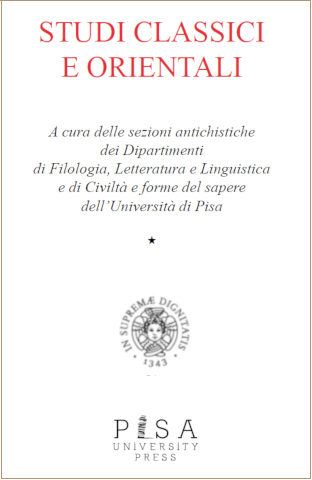LE TOMBE ‘ACUPA’ IN ITALIAE NELMEDITERRANEO - TIPOLOGIA ARCHITETTONICA, COMMITTENZA E RITUALE
Abstract
The aim of this article is to offer a topographic, chronological, typological and overall picture of the funerary structures of Roman Age generally indicated with the expression 'tombe a cupa/cupae' and present in numerous provinces of the Empire. The attempt is to constitute a starting point, which may be useful for the future study of various problems still open to new reflections and needfull of fur ther data. For this reason, the work is subdivided into various parts related to the different aspects taken into consideration: geographic distribution of such structures (updated to the latest publications); reflections upon the numerous expressions adopted (not always properly) in the course of the decades to catalogue and to describe shortly the typological characteristics of cupae. Afterwards the author proposes a terminological suggestion (which seems more appropriate to the real and exclusive function of cupae as funerary 'segnacoli') and analyses the various theories concerning the origin of such typology of monuments and the socioeconomic and ritual elements associated to it. The last part of the article suggests to make in every single case a distinction between cupa and signaculum on the basis of the presence/absence of a related tomb, while a careful overview of the attestations of groups and subgroups identified on the Italian territory is provided.


